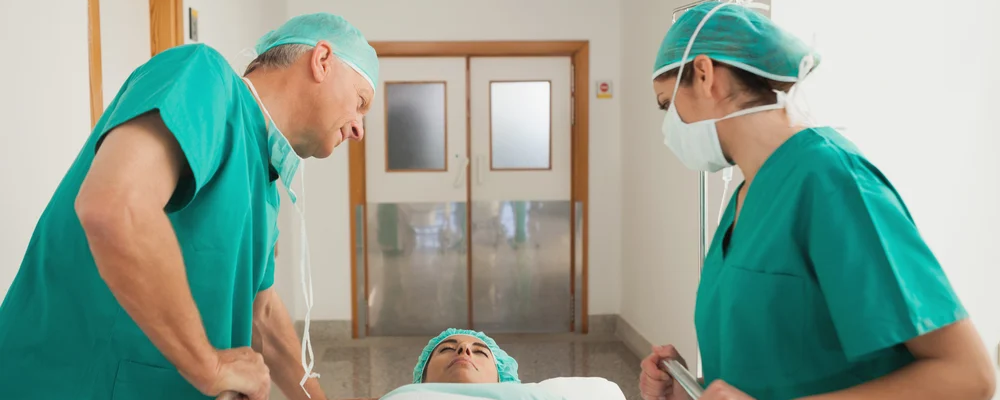4 ways to meet the NHSX ‘What Good Looks Like’ framework through digital rostering
by Rotageek on 15 November 2021

Earlier this year, the NHSX published ‘What Good Looks Like’; new guidance that outlines how healthcare organisations should be driving digital transformation in today’s world.
Following the digital leaps made during the Covid-19 pandemic, this framework hopes to support leaders to build on this progress and establish clear measures for success.
In this blog, we share how the adoption of an innovative rostering solution can help NHS organisations meet these measures and accelerate digital transformation across our healthcare service.
What Good Looks Like - 7 measures for success
Over the last 18 months, the NHS has achieved a phenomenal level of digital growth that may have taken years had it not been for the pandemic. This rapid transformation has demonstrated not only what the NHS is capable of, but also a vital need for the ongoing investment into digitising our healthcare.
The What Good Looks Like (WGLL) guidance sets out seven success measures to help health and care leaders to continue to digitise, connect and transform their services:
-
-
-
-
Well led
-
Ensure smart foundations
-
Safe practice
-
Support people
-
Empower citizens
-
Improve care
-
Healthy populations
-
-
-
Each of these measures contribute to the framework’s overall goal: to ensure all health and care organisations are equipped to improve their services, support staff and to continue saving lives.
The role of rostering in digital transformation
As ambassadors for digital healthcare innovation, supporting NHS organisations to improve both staff and patient care has always been our top priority. And we believe that a digital rostering solution is key to a successful transformation strategy.
Here are four ways you can meet the ‘What Good Looks Like’ framework through innovative scheduling:
1. Supporting staff to work flexibly and remotely
Empowering NHS workers is at the heart of a digital rostering solution.
To achieve the key success measure ‘support people’, the WGLL framework states that digital tools must allow staff to work flexibly, remotely and across multiple wards or sites.
Digital scheduling does just that. By enabling self-rostering, users can submit preferences, leave requests, swap shifts or communicate with rota managers to better their work-life balance.
What’s more is the technology’s ability to enable the frictionless movement of staff. Employees from different organisations can be scheduled to multiple locations, or vacant shifts can be filled in conjunction with Locum’s Nest’s bank staff platform.
2. With fairer, safer shift working
Healthcare workers are under more pressure than ever, with longer shifts, less breaks and growing pressures to overcome the NHS backlog. This has a detrimental impact on our doctors’ ability to do their jobs safely, with increased risk of workplace fatigue and major medical errors.
One digital solution the optimises rosters for all your doctors, will promote safe practice and improve care (two key measures of the What Good Looks Like framework).
The NHS states that all e-rostering solutions should enforce breaks and promote fairer scheduling to reduce burnout. A digital solution that implements the AMA risk score to reduce fatigue and ensure all staff are scheduled fairly, is an ideal way to automatically adhere to this.
Automatic rules take various risk factors into consideration such as consecutive working days, rest time and the switch from day to night shifts. And if a manager makes a manual edit, they’ll immediately be warned if an employee is above a threshold risk score to avoid breaking fairness rules.
By ensuring doctors are never overworked and their preferences are considered, this improves their overall wellbeing and ability to provide the best possible patient care.
3. Better visibility for efficient point of care
Ensuring front-line staff have shared real-time access to information is a key factor among many of the WGLL’s success measures. This results in faster, clearer access to patient records, supports safer quality of care and speeds up the treatment process.
By implementing interoperable systems, the NHS can improve data readiness and further support workers to do their jobs efficiently. Interoperability in rostering systems is therefore crucial. Not only does it eliminate the need for administrative time and thereby improve productivity. It also promotes enhanced visibility and data security.
At any one time, managers can gain complete oversight of everything that is happening within their organisation including where teams are scheduled, who is on various wards and where gaps need filling to ensure the right roles and skills are catered for. This speeds up patient care and provides transparency across staffing levels and spend with built-in optimised reporting.
4. Smart foundations for a future-proof NHS
Now is a crucial time for the NHS to consider which systems are adopted as they move into a new digital landscape.
Those selected will become the foundations for the future of our healthcare. It’s therefore imperative that any legacy infrastructures or newly adopted solutions are reliable, secure and resilient, whilst ensuring patient privacy and data protection are digitally enabled.
By implementing a robust rostering system, NHS organisations can align with the WGLL framework and maximise the use of digital innovation. Such solutions are cloud-based to ensure ultimate data security whilst providing organisation-wide, real-time information. This also allows the platform to be accessed across multiple devices with an intuitive user interface.
Rotageek’s pioneering scheduling technology was first developed by our two co-founders to overcome the challenge of creating flexible, fair rotas in their A&E department. A decade later and we now help dozens of NHS Trusts to implement flexible working, thereby improving retention rates, attracting talent and providing better staff care.
Find out more about how Rotageek’s healthcare rostering solution can help your organisation meet the What Good Looks Like framework and get in touch with our team today.
- Quick links
- Log In
- Book a Demo
- Help Centre
- Products
- Digital Scheduling
- Autoscheduling
- Forecasting
- Company
- Our Story
- Careers
- Blog
- Privacy Policy